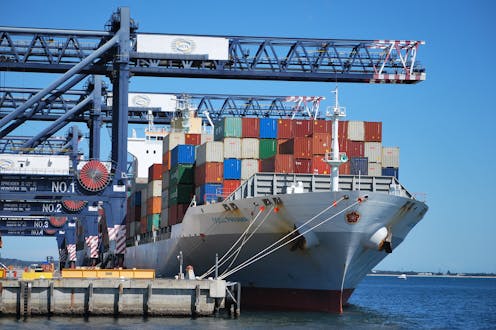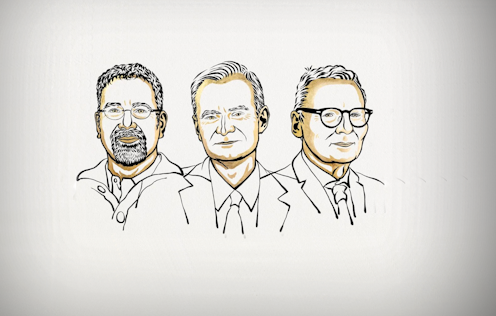China’s government is about to spend big on stimulus – can it turn around the country’s sluggish economy?

China’s relentless economic growth used to be the marvel of the world. Oh, what a memory.
The past couple of years have seen China contend with an economic slowdown amid colliding crises, many of which make it internationally unique. Consumer prices have been approaching deflationary territory, there’s an oversupply of housing, and youth unemployment has soared.
Mounting pressure has forced the Chinese government to step in. Over the past month, Beijing has put forward a set of significant economic stimulus measures aimed at reviving China’s faltering economy.
According to a research note by Deutsche Bank, this stimulus could potentially become “the largest in history” in nominal terms. But there’s still a lot we don’t know. So what kinds of measures that are in this package so far, and has China been here before?
What’s in the package?
On September 24, Pan Gongsheng, governor of China’s central bank, unveiled the country’s boldest intervention to boost its economy since the pandemic.
The initiatives included reducing mortgage rates for existing homes and reducing the amount of cash commercial banks are required to hold in reserves. The latter is expected to inject about 1 trillion yuan (A$210 billion) into the financial market by letting the banks lend out more.
On top of this, 800 billion yuan (A$168 billion) was announced to strengthen China’s capital market.
This comprised a new 500 billion yuan (A$105 billion) monetary policy facility to help institutions more easily access funds to buy stocks, and a 300 billion yuan (A$63 billion) re-lending facility to help speed up sales of unsold housing.
Further signs of economic revitalisation became evident at a Politburo meeting of China’s top government officials, two days after this announcement.
Chinese President Xi Jinping stressed the urgency of economic revival. Xi even encouraged officials to “go bold in helping the economy” without having to fear the consequences.
That same day, seven government departments released a joint policy package to stabilise China’s 500 billion yuan (A$105 billion) dairy industry, which has been severely impacted by declining milk and beef prices since 2023.
A market rollercoaster
Initially, the market’s response was overwhelmingly positive. Perhaps too positive. In the last week of September, stock markets in Shanghai, Shenzhen, and Hong Kong saw their biggest weekly rise in 16 years.
On October 8, following China’s National Day holiday, turnover on the Shanghai and Shenzhen stock exchanges hit an unprecedented 3.43 trillion yuan (A$718 billion). However, expectations for further stimulus measures were met with disappointment.
China’s National Development and Reform Commission brought forward 100 billion yuan (A$21 billion) in spending from the 2025 budget. That wasn’t enough to sustain market optimism. On October 9, Chinese stocks saw their most severe drop in 27 years.
This downturn only worsened a few days later, when China’s Ministry of Finance hinted there was “ample room” to raise debts but did not specify any new stimulus measures.
Still thin on the details
The market remains deeply uncertain about the future direction of China’s economic policies and what they might mean for the world. Hopes that more details might be released over the weekend were largely dashed.
Back in July, Chinese authorities asserted in their Third Plenary Session communique that China “must remain firmly committed” to achieving this year’s economic growth target of 5%. Compared to the country’s reform-era economic performance, that’s a modest goal.
But facing a persistently sluggish economic outlook, Xi later seemed to subtly shift the tone, changing the language from “remain firmly committed” to “strive to fulfill” in September.
Over the past decades, China has frequently employed massive-scale stimulus measures to revive its economy during downturns. These policies have been able to significantly rejuvenate the economy, though occasionally with some worrying side effects.
In response to the 2008 global financial crisis, China’s State Council released a 4 trillion yuan (A$837 billion) stimulus package. This successfully helped China stand firm through the crisis and was credited as a key stabiliser of the global economy.
But it also accumulated trillions of yuan in debt through local government financing and accelerated the rise of “shadow banking” – unregulated financial activities.
China also spent big on stimulating its economy in 2015, following stock market turbulence, and then again in the wake of the pandemic.
What should we expect?
What should we expect this time? How balanced or sustainable will any ensuing growth be?
We are still waiting on many of the details about the size and scope of the package, but any big increase in Chinese economic demand will likely have “spillover” effects.
As we’ve discussed, many of the measures announced to date will have their most immediate effect on borrowing, lending and liquidity in China’s stock markets.
That suggests we should watch for what’s called the “wealth effect” in economics. This is the theory that rising asset prices – such as for housing or shares – make people feel wealthier and therefore spend more.
If China’s big stimulus spend causes sustained increases in asset values, it could give rise to economic optimism. Chinese consumers - and investors - may become less anxious about the future.
From Australia’s point of view, that could see increases in demand in areas where our economies are interlinked – iron ore, tourism, education and manufactured food exports.
More broadly, Chinese demand could contribute to growth in other global economies, with a self-reinforcing effect on the world as a whole.
Beware financialisation
On the other hand, China’s shift to depending more on volatile asset price rises in its capital markets to sustain growth could have destabilising effects. Where asset price increases benefit those at the “top end of town,” they can breed inequities and imbalances of their own.
China’s “Black Monday” stock market crash in 2015 raised alarm in Beijing. Partly reflecting a wariness of excess financialisation, Xi cautioned at the time that “housing is for living in, not for speculation”.
So far, China is still navigating its path towards a more sustainable development model, striving to strike a balance between sustaining economic growth and stabilising its domestic markets and political landscape. As for the outcome, it remains a profound uncertainty for us all - perhaps China itself included.
Authors: The Conversation













